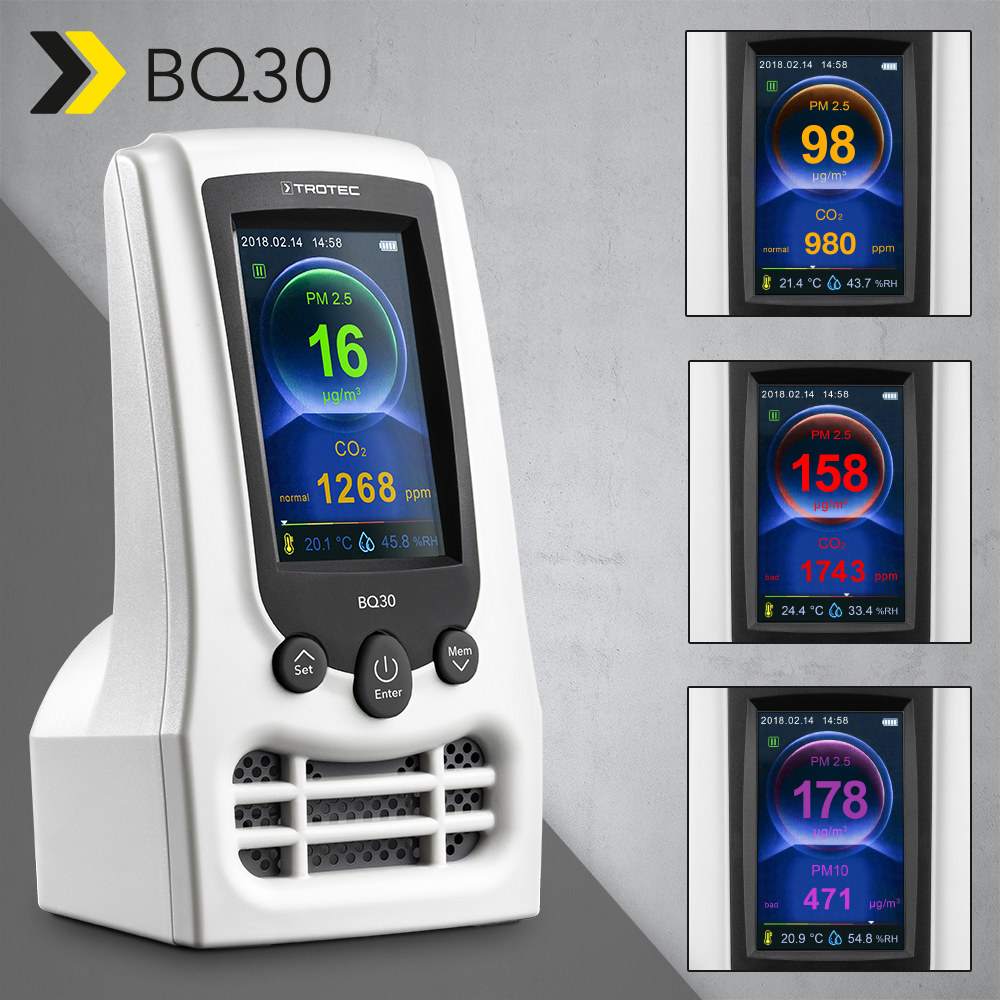 Rarely has there been so much talk about ‘ventilation’ as in the past and current year. No wonder, since the exchange of air in rooms was and still is considered a tried and tested means against potential corona virus load caused by infectious aerosols. So far, there is no measuring device that is able to prove the contamination of indoor air by SARS-CoV-2. However, it is possible to determine a necessary ventilation interval via the ‘detour’ of a permanent measurement of CO2 values. Because the more people are in living rooms, office spaces, production rooms, schools and daycare centres, the more the exhaled carbon dioxide level increases – to the point of a CO2 alarm: time to open all the windows!
Rarely has there been so much talk about ‘ventilation’ as in the past and current year. No wonder, since the exchange of air in rooms was and still is considered a tried and tested means against potential corona virus load caused by infectious aerosols. So far, there is no measuring device that is able to prove the contamination of indoor air by SARS-CoV-2. However, it is possible to determine a necessary ventilation interval via the ‘detour’ of a permanent measurement of CO2 values. Because the more people are in living rooms, office spaces, production rooms, schools and daycare centres, the more the exhaled carbon dioxide level increases – to the point of a CO2 alarm: time to open all the windows!
Read More
Posted in TROTEC, Up To Date | Tagged with Air quality monitor, CO2, Tips, Trotec, air quality, air quality data logger, indoor climate, particle measuring, practical knowledge |
Leave a comment
 Rarely has there been so much talk about ‘ventilation’ as in the past and current year. No wonder, since the exchange of air in rooms was and still is considered a tried and tested means against potential corona virus load caused by infectious aerosols. So far, there is no measuring device that is able to prove the contamination of indoor air by SARS-CoV-2. However, it is possible to determine a necessary ventilation interval via the ‘detour’ of a permanent measurement of CO2 values. Because the more people are in living rooms, office spaces, production rooms, schools and daycare centres, the more the exhaled carbon dioxide level increases – to the point of a CO2 alarm: time to open all the windows!
Rarely has there been so much talk about ‘ventilation’ as in the past and current year. No wonder, since the exchange of air in rooms was and still is considered a tried and tested means against potential corona virus load caused by infectious aerosols. So far, there is no measuring device that is able to prove the contamination of indoor air by SARS-CoV-2. However, it is possible to determine a necessary ventilation interval via the ‘detour’ of a permanent measurement of CO2 values. Because the more people are in living rooms, office spaces, production rooms, schools and daycare centres, the more the exhaled carbon dioxide level increases – to the point of a CO2 alarm: time to open all the windows! Potential fine dust sources and CO₂ emissions negatively influence home climate and wellness. Seemingly ‘normal’ things such as cooking, hoovering, tobacco and candle smoke, or lighting stoves or fireplaces contribute to this. Increased level of fine dust and CO₂ in the indoor air is responsible for difficulty in concentrating and sleeping, and for allergic reactions. As so-called CO₂ signal lights, measuring instruments serve to minimise the risk of infection during the current pandemic by using the right air. The Trotec Air Quality Monitor BQ30 determines not only the current CO₂ pollution levels but also the fine dust and pollen levels, as well as the prevailing indoor climate data – and displays the quality of the indoor air at a glance.
Potential fine dust sources and CO₂ emissions negatively influence home climate and wellness. Seemingly ‘normal’ things such as cooking, hoovering, tobacco and candle smoke, or lighting stoves or fireplaces contribute to this. Increased level of fine dust and CO₂ in the indoor air is responsible for difficulty in concentrating and sleeping, and for allergic reactions. As so-called CO₂ signal lights, measuring instruments serve to minimise the risk of infection during the current pandemic by using the right air. The Trotec Air Quality Monitor BQ30 determines not only the current CO₂ pollution levels but also the fine dust and pollen levels, as well as the prevailing indoor climate data – and displays the quality of the indoor air at a glance.